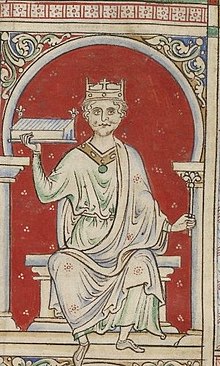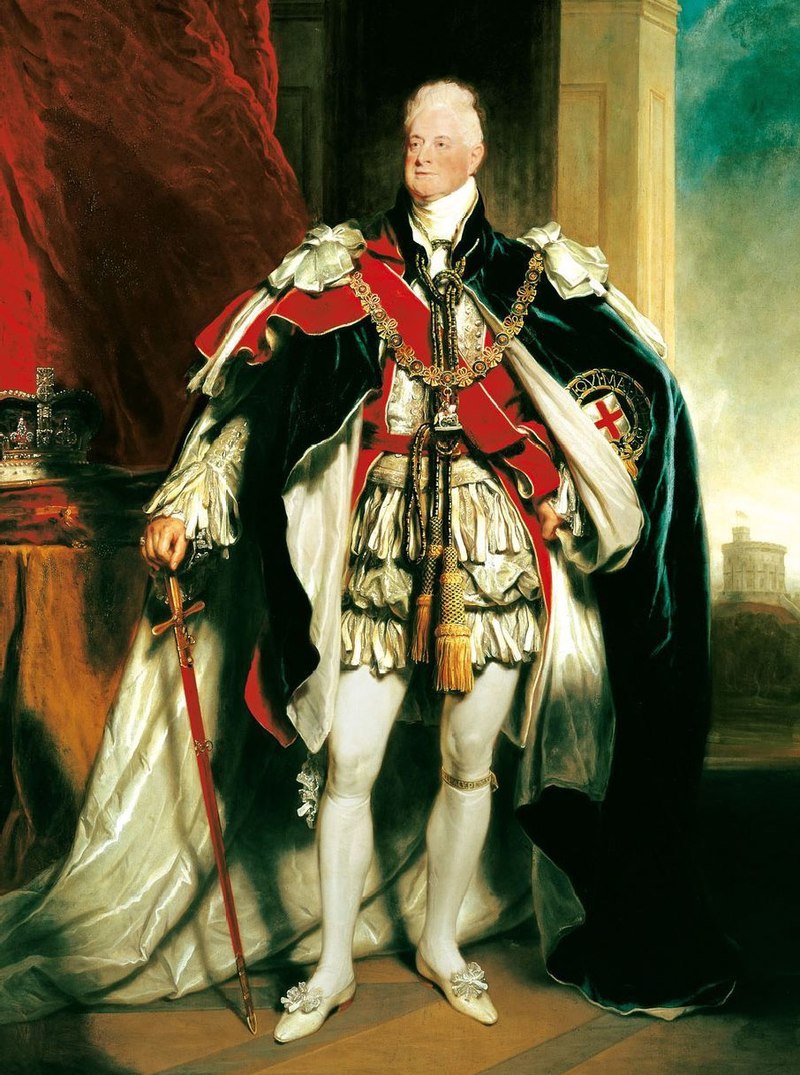The Royal Family have announced that the Duchess of Cambridge is pregnant with her third child. As with her previous pregnancies, the Duke and Duchess were forced to announce the news earlier than they intended (when the Duchess required medical attention for hyperemesis gravidarum). As a result of legislation passed in 2013, regardless of whether the child is a girl or a boy, they will be fifth in line to the throne, potentially becoming the first member of the royal family directly affected by the change in the law. Already, the media is awash with speculation that, as the third child, there is little chance that they will ascend the throne, as it was when Princess Charlotte was born. This is something which is not quite as ‘unheard of’ as the media might think.
William II

William Rufus was the third child of William the Conqueror, and became king in September 1087. William was the third son, and at the time of his father’s death, his elder brother, Robert Curthose, was still alive. Yet, it was William who succeeded his father as King of England. Robert’s life was marked with rebellion against his father, and the two were engaged in frequent military skirmishes. When William faced his death in 1087, he allegedly wanted to disinherit his eldest son, with whom he had only reconciled on occasion and for brief spells. Instead, he bestowed the duchy of Normandy upon Robert and gave William Rufus the kingdom of England (his second son Richard had died in a hunting accident in the New Forest).
William and Robert lived at peace for a time, until a rebellion broke out against the former, with Robert’s support. When Robert failed to deliver on that support, the rebellion was quashed and William would later successfully claim parts of Normandy, after defeating Robert’s armies there. They later made peace and Robert mortgaged Normandy to William for money to go on crusade. One of Robert’s illegitimate sons was also a popular courtier at William’s court, but would die in a hunting accident in the New Forest.
William’s rule was one of conflict. On one hand, England (and Normandy) saw some stability under his rule and he was successful militarily. On the other hand, he had poor relations with the church and raised the money for mortgaging Normandy with an unpopular and rather heavy tax.
After a thirteen-year rule, William went hunting in the New Forest, and like his brother and nephew, was killed in a hunting accident. The throne was seized by his younger brother, Henry, who would later capture Robert and imprison him. Robert died in captivity at the great age of eighty, a year before his younger brother. Thankfully, quite far from the New Forest.
Henry VIII

The third of eight children to Henry VII and his wife, Elizabeth of York, Henry took his place in the succession ahead of his elder sister, Margaret. His elder brother, Arthur, was heir apparent and invested as Prince of Wales. He died in 1502, shortly after taking up residence in Ludlow castle. Seven years later, Henry VIII succeeded his father, shortly after his eighteenth birthday.
Henry VIII is, of course, one of the more colourful monarchs in British history. Famous for being…Henry VIII. And for his six marriages, the break with Rome, the subsequent foundation of the Church of England, and his own charisma. Henry ruled for almost forty years. His early reign was dominated by his desire for a male heir, and eventually he had a son by his third wife, Jane Seymour, in his late forties. The son, Edward, was himself a third (surviving) child, following his two sisters, Mary and Elizabeth. Of course, as a boy, he overtook his sisters in the line of succession and succeeded his father upon his death in 1547. Edward was only nine when he became king, and reigned for five years before he died of consumption and passed the throne to Henry VIII’s eldest child, Mary.
William IV

William IV’s parents had fifteen children, having two sons before William, both of whom survived into adulthood. William’s father, George III, suffered greatly in his mental health in his later life and as such, William’s eldest brother ruled as Prince Regent (and later George IV).
George IV was already well into his fifties when he became king, and was not looking to have a son. Although he had married in his youth, the marriage was unsuccessful due to it largely being under duress. Both parties disliked each other and were not discreet about it. When their only daughter, Charlotte, was born nine months after their wedding, the couple separated and remained so. While Charlotte was to be Queen after George’s death, she died young in 1817, shortly after giving birth to a stillborn son, while George was still the prince regent. At this point, the succession faced a problem; despite having so many siblings, none of them had any legitimate children. In the meantime, George’s brother, Frederick, became his heir presumptive. Frederick’s marriage was also unhappy and the two had no children. When Frederick died, before George in 1827 and aged sixty three, William became heir presumptive.
When George died in 1830, William became king at the age of sixty four. In his youth, William had lived with his long-term lover, the actress Dorothea Bland, with whom he had ten illegitimate children. When Princess Charlotte died, pressure mounted on William to marry and produce an heir, given that his elder brothers had no children, failed marriages and their wives were well beyond child-bearing age. His relationship with Bland had already ended, but it took some time to secure a bride due to objections from either George, as Prince Regent, or the ladies themselves. Eventually he married Adelaide of Saxe-Meningen, and the two were happily married for its duration. Despite their affection for each other, they failed to secure the succession. They had two daughters who died in infancy, and three stillborn children.
The succession therefore fell to the legitimate child of George’s next brother; Edward. Edward’s daughter, Victoria, had been born three years after the death of Princess Charlotte, though George IV had decried her potential succession while he was Prince Regent. Her father, Edward, had died less than a year after her birth, leaving Victoria in the care of her mother. Her mother, and her advisers, continually thwarted the attempts of William and Adelaide to forge a particularly strong relationship with Victoria. Nevertheless, William was fond of his niece and at his final banquet declared his intent to survive for nine more months to see Victoria reach her majority. William died nine months and twenty seven days later. Good lad.
If you’d like to join me for more fun and games in picking apart history, and other behind the scene tangents, you can support me via my Patreon.













